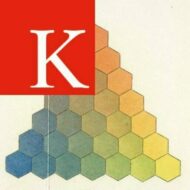An article on “‘Fake news’ as infrastructural uncanny” co-authored by Lecturers at the Department of Digital Humanities, King’s College London – Jonathan Gray and Liliana Bounegru – along with Tommaso Venturini (also a former Lecturer at the department) has just been published in New Media & Society. It builds on work that they co-investigated on the Field Guide to “Fake News” with the Public Data Lab. The article is open access and freely available on the web and in PDF format. The abstract is copied below.
‘Fake news’ as infrastructural uncanny
Jonathan Gray, Liliana Bounegru, Tommaso Venturini
In this article, we examine how the social disturbance precipitated by ‘fake news’ can be viewed as a kind of infrastructural uncanny. We suggest that the threat of problematic and viral junk news can raise existential questions about the routine circulation, engagement and monetisation of content through the Web and social media. Prompted by the unsettling effects associated with the ‘fake news’ scandal, we propose methodological tactics for exploring (1) the link economy and the ranking of content, (2) the like economy and the metrification of engagement and (3) the tracker economy and the commodification of attention. Rather than focusing on the misleading content of junk news, such tactics surface the infrastructural conditions of their circulation, enabling public interventions and experiments to interrogate, challenge and change their role in reconfiguring relations between different aspects of social, cultural, economic and political life.

